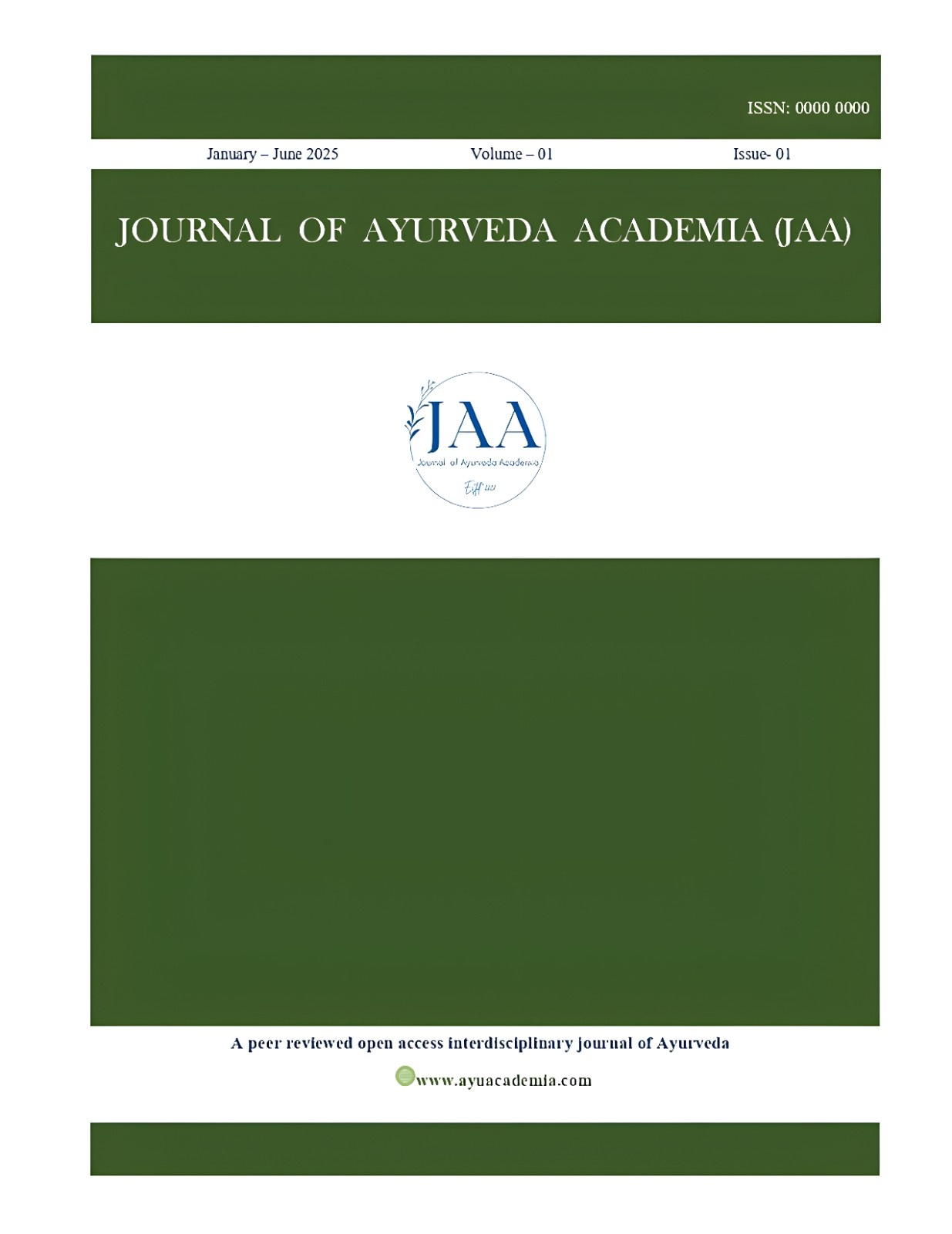Evaluation of the Clinical Efficacy of Rumex vesicarius Linn. (Chukrika) in Arochak: A Pharmacognostical and Clinical Study
ORIGIONAL RESEARCH (CLINICAL STUDY)
DOI:
https://doi.org/10.64280/JAA.2025.V1I102Keywords:
Arochak, Chukrika, Rumex vesicarius Linn., Ayurveda, AgniAbstract
Background
Arochak (anorexia) is a common gastrointestinal disorder described in Ayurveda, resulting from vitiated Kapha and Vata doshas and impaired Agni (digestive fire). Traditional texts mention Chukrika (Rumex vesicarius Linn.) as Deepana (appetizer), Pachana (digestive stimulant), and Ruchya (taste enhancer), but its clinical efficacy has been inadequately studied.
Objectives: To identify the correct botanical species used as Chukrika and to evaluate the clinical efficacy of Rumex vesicarius Linn. in managing Arochak.
Materials and Methods
Three species of Rumex—R. vesicarius, R. hastatus, and R. nepalensis—were collected from Baijnath region, Himachal Pradesh, and pharmacognostically authenticated. A single-arm clinical trial was conducted on 30 patients diagnosed with Arochak at Rajiv Gandhi Government Post Graduadate Ayurvedic College, Paprola, Himachal Pradesh. Patients received 5g of Chukrika Patra Churna twice daily with lukewarm water for 15 days. Clinical symptoms such as Ananabhilasha, Kashaya Asyata, and Picchilita were assessed using a subjective grading scale. Statistical analysis was performed using paired t-test.
Results
Significant improvement was observed across major symptoms: Ananabhilasha: 80.4% relief (p<0.001) Kashaya Asyata: 86.6% relief (p<0.001) Picchilita: 73.07% relief (p<0.001) Clinically, 50% of patients were cured, 33% markedly improved, and 10% moderately improved. No adverse effects were reported.
Conclusion
Rumex vesicarius Linn. was confirmed as the most effective Chukrika species for Arochak. The herb demonstrated significant clinical efficacy and safety, validating its traditional use and suggesting potential for broader therapeutic application in digestive disorders.







